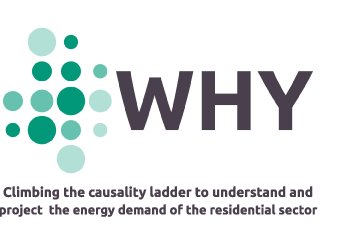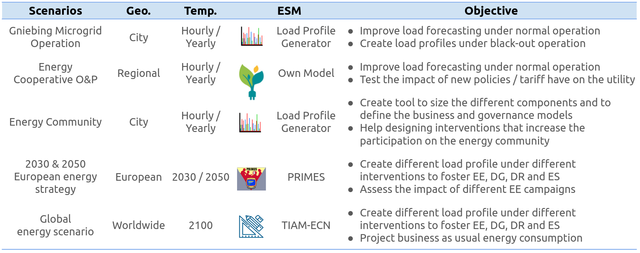Designing the Right Policy: Stakeholders Enrich the WHY Use Cases
Since our last newsletter, large progress has been made in the WHY project. With the finalisation of the Deliverable 1.3 “Use Case definition: objectives, scope, variables”, the WHY Use Cases are defined and designed with relevant stakeholders. This short article provides a sneak peek into the definition of the five Use Cases of the WHY project, that capture a wide diversity of contexts from the micro-grid to energy community, national, European, and global level. In case you are interested in additional details for the WHY Use Cases, you may take a closer look at Deliverable D1.3 developed by E3-Modelling and other project partners (4ward Energy Research, TNO, University of Deusto, GOINER)
The Use Cases play a central role in the WHY project, as through their application in diverse situations, the WHY Toolkit and models will be tested and validated. This deliverable provides detailed definition for the Use Cases, that will be then operationalized and carried out in WP5 using the WHY Toolkit and Energy System Models (ESMs). In this way, the impacts of WHY modelling enhancements on energy efficiency and climate mitigation strategies at different jurisdiction levels, from the micro-grid and energy communities to the European and global levels will be analysed. Click on the image to enlarge the summary of the WHY Use Cases.
The design of all Use Cases has been greatly benefited from the active engagement of stakeholders and end-users, including policy makers, public authorities, and utilities. This has taken various forms, depending on the specificities of each Use Case ranging from the organisation of (online and in-person) workshop to interviews, focus groups or online questionnaires. In all cases, stakeholders helped to define the most important aspects, questions, and policy-relevant insights to be assessed in each Use Case of WHY. An active communication channel with stakeholders has been established and will be extensively used to discuss the results of the Use Cases and identify policy-relevant recommendations.
Various aspects were considered in the definition of each Use Case, including:
- the types of potential interventions and policy measures to be assessed (with the support of relevant stakeholders);
- the external policy and regulatory framework at different jurisdiction levels, including both those already legislated and implemented as well as possible future policies and strategies targeting Energy efficiency improvements, fostering Demand Response actions, or the electrification of energy services,
- the load profiles to be generated and integrated in the different use cases including the number and characteristics of different residential loads and their temporal and spatial scale,
- The development of the external and internal variables (or aspects) that affect energy consumption (weather, energy prices, energy taxes, socioeconomic developments, incomes, behavior, cultural, grid access, etc.), based on the latest available official or scientific sources,
- The Sustainability Assessment Model, based on a collection of the most relevant KPIs in each Use Case to measure the technical, economic, environmental, and social sustainability.
The study also includes the relevant information needed for the implementation of the scenarios and policy interventions with the WHY Toolkit and the links with large-scale ESMs (PRIMES, TIAM-ECN, PROMETHEUS), focusing on the European and global Use Cases where the use of ESMs was identified as important. The deliverable serves as a starting point and as a basis for the analysis in WP5, providing key input assumptions, policy framework, definitions, policy interventions, and KPIs to be used for the actual development of the five Use Cases through scenario implementation, simulations, and policy impact assessment using the WHY Toolkit.
We invite you to take a deeper look into the WHY project and its five diverse Use Cases, as new project deliverables are published this month.
Author: Panagiotis Fragkos, E3Modelling, Greece





